Feist dogs. It’s likely that many of you haven’t stumbled upon these delightful canines in your everyday conversations about pets. It wouldn’t be surprising if some of you are scratching your heads right now, wondering, ‘Feist dogs? What on earth are those?’.
And that’s precisely where the adventure begins.
These pint-sized powerhouses may not always steal the spotlight, but believe me, they’re worth every bit of attention. With fourteen unique types of Feist dogs, ranging from the spirited Barker Stock to the nimble Treeing Feist, there’s a Feist for every dog lover’s heart.
Whether you’re a seasoned Feist enthusiast or simply intrigued by these underappreciated gems, join me as we dive deep into the complete list of every Feist dog.
TABLE OF CONTENTS
An Overview of Feist Dogs
The Hidden Gems of the Canine World
Feist dogs may not be as widely recognized as some of their more popular counterparts, but don’t let their understated status fool you. These dogs pack a punch of personality, charm, and history that’s truly captivating.
What Exactly Are Feist Dogs?
Feist dogs are a group of small-to-medium-sized breeds originating from the Southern United States, particularly Appalachia. They were bred primarily for hunting small game, such as squirrels and rabbits, and their name “Feist” likely comes from an old English word meaning “small and lively”.
Unearthing Their Roots
The roots of Feist dogs trace back to early settlers in the American South who brought with them a variety of small hunting dogs from Europe. These dogs were prized for their agility, keen senses, and ability to track and tree game with remarkable efficiency.
Evolution Through Necessity
Over time, these hunting dogs began to interbreed with local dogs, resulting in the development of what we now recognize as Feist breeds or Feist mix. Their compact size, sharp instincts, and tireless work ethic made them invaluable companions for early settlers who relied on them to help put food on the table.
A Testament to Adaptability
The diverse terrain and climates of the Southern United States played a significant role in shaping the various Feist breeds we see today. From the dense forests of the Appalachian Mountains to the swamps of the Deep South, Feist dogs adapted to their surroundings with remarkable versatility, proving themselves to be true survivors.
Importance of Understanding Different Feist Breeds
From Adobe Stock
Beyond the Surface
While Feist dogs may share some common traits, understanding the nuances of each breed is crucial for potential owners and enthusiasts alike. From temperament to energy levels, the differences between Feist breeds can greatly impact their suitability for various lifestyles and environments.
Finding Your Perfect Match
By delving into the specifics of different Feist breeds, dog lovers can better identify which type of Feist aligns with their preferences and lifestyle. Whether you’re looking for a lively companion for outdoor adventures or a laid-back cuddle buddy for lazy afternoons, there’s a Feist out there for everyone.
The A to Z List Of Every Feist Dog
1. Barger Stock Feist
Origin and History
The Barger Stock Feist, named after Bill and Rita Barger, who played a significant role in their development, traces its lineage back to the Appalachian Mountains of the Southern United States. Bred for their agility, keen senses, and hunting prowess, Barger Stock Feists were prized companions for settlers and hunters navigating the rugged terrain of the region.
Characteristics and Temperament
Barger Stock Feists are known for their intelligence, versatility, and unwavering determination in the field. They possess a strong prey drive and excel in tasks requiring agility and quick reflexes. Despite their small size, Barger Stock Feists are fearless and tenacious hunters, capable of tracking and treeing game with remarkable efficiency.
Unique Traits
One of the standout traits of Barger Stock Feists is their exceptional treeing ability. When they locate prey, they will eagerly bark and circle the base of the tree, alerting hunters to the animal’s presence. This trait, combined with their sharp senses and relentless determination, has made them invaluable assets for hunters seeking to harvest small game in the dense forests of the Appalachian Mountains.
Considerations for Potential Owners
Prospective owners should be prepared to provide Barger Stock Feists with ample opportunities for exercise and mental stimulation. These dogs thrive in active households where they can engage in activities such as hiking, running, or participating in canine sports. Additionally, early socialization and consistent training are essential to channel their intelligence and energy in positive directions.
2. Bench-Legged Feist
Sometimes called the “Teddy Roosevelt Terrier”, the Bench-Legged Feist dog has one of the better-documented histories in the Feist breed family. Under the name Teddy Roosevelt Terrier, this is the only Feist dog to be recognized by the American Kennel Club.
Origin and History
The origins of the Bench-Legged Feist can be traced back to the early days of American settlement, where they were bred by pioneers seeking a versatile hunting companion. Named for their distinctive short legs, Bench-Legged Feists were prized for their ability to track and tree game with precision, making them invaluable assets for hunters in the dense forests of the Eastern United States.
Physical Appearance and Size
Bench-Legged Feists are characterized by their compact, muscular build and short, sturdy legs. They typically stand between 12 to 16 inches at the shoulder and weigh around 15 to 25 pounds. Despite their diminutive stature, Bench-Legged Feists are robust and athletic, capable of traversing challenging terrain with ease.
Behavior and Training
Bench-Legged Feists are known for their keen intelligence, alertness, and determination. They are quick learners and thrive on mental stimulation, making them highly trainable dogs. However, they can also be independent-minded at times, so consistent and patient training is essential to bring out their full potential.
Living Requirements
While Bench-Legged Feists can adapt well to various living environments, they thrive in homes with access to outdoor space where they can burn off their abundant energy. Daily exercise and interactive play sessions are a must to keep these active dogs happy and fulfilled. Additionally, owners should provide mental stimulation through training, puzzle toys, and interactive games to prevent boredom and destructive behaviors.
3. Buckley Feist
Background Information
The Buckley Feist has its roots in the Southern United States. They were bred by Jack Buckley of Kentucky. However, these canines are not recognized by any breed groups except the Buckley Registry. This may be because many kennel clubs consider the Buckley to be a sub-breed of the Mountain Feist.
Originating in the early 20th century, Buckley Feists were bred for their versatility as hunting dogs, capable of tracking, treeing, and retrieving game with skill and precision.
Notable Features and Qualities
Buckley Feists are renowned for their intelligence, agility, and keen sense of smell. They possess a strong prey drive and excel in tasks requiring speed, endurance, and determination. Buckley Feists are also known for their versatility, adapting well to various hunting environments and game species.
Compatibility with Families
Despite their hunting instincts, Buckley Feists can make affectionate and loyal family pets when properly socialized and trained. They form strong bonds with their human companions and are known for their protective nature. With early socialization and consistent training, Buckley Feists can coexist harmoniously with children and other pets.
Health Considerations
Like all dog breeds, Buckley Feists may be prone to certain health issues, including hip dysplasia and eye problems. Prospective owners should ensure that Buckley Feists receive regular veterinary check-ups, proper nutrition, and exercise to maintain their overall health and well-being. Additionally, responsible breeding practices can help minimize the risk of hereditary health conditions in Buckley Feists.
With their intelligence, versatility, and affectionate nature, Buckley Feists offer a compelling combination of hunting prowess and companionship.
4. Charlie Feist
Origin and History
The Charlie Feist, also known as the American Treeing Feist, traces its roots back to the early 20th century in the Southern United States. Named after a legendary hunter and breeder, Charlie Feists were selectively bred for their exceptional treeing ability, making them prized companions for small game hunters.
Characteristics and Temperament
Charlie Feists are known for their boundless energy, intelligence, and unwavering determination in the field. They possess a keen sense of smell and excellent treeing instincts, allowing them to track-and-corner-game with precision. With proper socialization and training, Charlie Feists also makes for affectionate and loyal family pets, forming strong bonds with their human companions.
Unique Traits
One of the most distinctive traits of Charlie Feists is their distinctive “treeing” behavior. When they locate prey, they will bark loudly and eagerly at the base of the tree, alerting hunters to the animal’s presence. This trait has made them invaluable assets for hunters seeking to track and harvest small game in wooded areas.
Considerations for Potential Owners
If you want to bring home a Charlie Feist, you should be aware of their high energy levels and their need for regular exercise. They also need to be mentally stimulated at all times. They need a household that will give them space to do what they want to do, including participate in activities such as hiking and jogging, and even canine sports. Early socialization and consistent training are essential to channel their intelligence and enthusiasm in positive directions.
5. Denmark Feist
Origin and History
Also known as the Old Danish Chicken Dog, the Denmark Feist has a rich history dating back to centuries. Despite their confusing name, the Denmark is actually a dog of American origin. Descended from a Feist dog and brought by the Slade family in 1917, it was originally bred as versatile farm dogs and used to hunt boar, bobcats, and squirrels. Over time, the breed was refined and in 1984, the Denmark Treeing Feist was introduced to the world.
Denmark Feists serve as loyal guardians of the homestead.
They are very intelligent, but often use their IQ to be a little stubborn, training requires both consistency and patience.
Physical Appearance and Size
Denmark Feists are medium-sized dogs with sturdy builds and agile, athletic frames. They typically stand between 17 to 20 inches at the shoulder and weigh around 25 to 40 pounds. Their coats are dense and weather-resistant, well-suited to withstand the harsh Scandinavian climate.
Behavior and Training
Denmark Feists are known for their intelligence, alertness, and strong work ethic. They excel in tasks requiring problem-solving skills and adaptability, making them versatile companions for various activities. With proper training and socialization, Denmark Feists can thrive in a variety of environments, from rural farms to urban households.
Living Requirements
Owning a Denmark Feist means giving them more than enough space to run and explore. However, they can also adapt well to apartment living with sufficient exercise. Additionally, owners should provide consistent training and positive reinforcement to ensure that Denmark Feists remain well-behaved and well-adjusted companions.
6. Gray’s Mountain Feist
Origin and History
Gray’s Mountain Feist, named after the Gray family as it was first bred by Marcus Gray in 2005, originated in the rugged terrain of the Appalachian Mountains. Bred for their agility, endurance, and hunting prowess, Gray’s Mountain Feists were prized companions for settlers and hunters navigating the challenging landscape of the region.
Sometimes called Gray’s Mountain Squirrel Dogs, they are working canines and do not take well to family life. However, they can thrive in an active home that regularly partakes in hunting.
Characteristics and Temperament
Gray’s Mountain Feists are known for their intelligence, versatility, and fierce loyalty to their owners. They possess a strong prey drive and excel in tasks requiring agility and quick reflexes. Despite their small size, Gray’s Mountain Feists are fearless and tenacious hunters, capable of tracking and treeing game with remarkable efficiency.
Unique Traits
One of the standout traits of Gray’s Mountain Feists is their exceptional treeing ability. When they locate prey, they will eagerly bark and circle the base of the tree, alerting hunters to the animal’s presence. This trait, combined with their sharp senses and relentless determination, has made them invaluable assets for hunters seeking to harvest small game in the dense forests of the Appalachian Mountains.
Considerations for Potential Owners
If you want Gray’s Mountain Feists in your home, you should be prepared to give them the time and space they need – to move around, run, and play. Along with this, you should be committed to allowing them to grow strong through physical exercise and mental stimulation.
To ensure that Gray’s Mountain Feists stay in their best behavior whether in or outside of your home, provide them with socialization and training as early and as regularly as possible.
7. Hunter’s Creek Feist
From Adobe Stock
Origin and History
Bred by German and Irish immigrants, this breed truly captures the heart of the all-American Feist dog.
Hunter’s Creek Feist, also known as the Georgia Brown Dog, traces its lineage back to the Southern United States, particularly Georgia. Bred for their versatility and hunting prowess, Hunter’s Creek Feists were prized companions for farmers and hunters seeking a reliable and hardworking dog to assist them in their daily tasks.
Physical Appearance and Size
Hunter’s Creek Feists are medium-sized dogs with muscular builds and short, dense coats. They typically stand between 15 to 18 inches at the shoulder and weigh around 20 to 30 pounds. Their coats come in a variety of colors, including brown, black, and brindle, and they often have distinctive white markings on their chests and feet.
Behavior and Training
Hunter’s Creek Feists are known for their intelligence, loyalty, and strong work ethic. They excel in tasks requiring problem-solving skills and adaptability, making them versatile companions for various activities.
Living Requirements
Prospective owners should be prepared to provide Hunter’s Creek Feists with various mental and physical stimulation to keep them happy and healthy. These dogs thrive in environments where they have space to run and explore, but they can also adapt well to apartment living with sufficient exercise. Additionally, owners should provide consistent training and positive reinforcement to ensure that Hunter’s Creek Feists remain well-behaved and well-adjusted companions.
These high-energy hunting companions are not for the fainthearted. When bored, Hunter’s Creeks are known to be noisy and destructive. As a result, these active pups are best suited to homes where they will be worked. Their desire to work means they bond strongly with their owner, making them eager to please. This same drive means they are likely to chase anything small, be it a squirrel, house rabbit, or even a cat. As a result, this breed should never be left unsupervised with anything small enough to chase.
Their intelligence makes them naturally inquisitive, making them a great match for anyone considering entering into canine sports such as agility, flyball, and obedience.
8. Kemmer Feist
Origin and History
Kemmer Feist, named after breeder Robert Kemmer, originated in the Southern United States and is renowned for its versatility and hunting prowess. Bred from a combination of Feist, Terrier, and other hunting breeds, Kemmer Feists are prized for their ability to track, tree, and dispatch game with efficiency and skill.
Characteristics and Temperament
Kemmer Feists are known for their intelligence, agility, and fierce loyalty to their owners. They possess a strong prey drive and excel in tasks requiring speed, agility, and determination. Despite their small size, Kemmer Feists are fearless hunters, capable of taking on much larger prey with ease.
Unique Traits
One of the standout traits of Kemmer Feists is their adaptability to different hunting environments and game species. Whether tracking squirrels in the forest or treeing raccoons in the swamp, Kemmer Feists are versatile hunters capable of thriving in a variety of conditions. Additionally, their keen senses and sharp instincts make them invaluable assets for hunters seeking reliable and hardworking companions in the field.
Considerations for Potential Owners
Kemmer Feists will be happy and healthy in households that allow them to be active and engage in different activities. Mental and physical stimulation is also important. As in other Feist dogs, early socialization and consistent training are essential to channel their intelligence and energy in positive directions.
9. Mountain Feist
Origin and History
The Mountain Feist, also known as the Appalachian Feist, has its roots deeply embedded in the rugged terrain of the Appalachian Mountains. To be more specific, this energetic little dog was first seen in the Ozark Mountains, hence their name. As with the other pooches in our list, Mountain Feists look very similar to Jack Russell mixes.
While their specific origin is unknown, it is generally believed they were bred by the early pioneers in the 17th Century. Bred for their agility, endurance, and hunting prowess, Mountain Feists were prized companions for settlers and hunters navigating the challenging landscape of the region.
Characteristics and Temperament
Mountain Feists are known for their intelligence, versatility, and unwavering determination in the field. They are also friendly and known for their social nature and busy attitude. They are great with young children, too. Additionally, they are very rarely aggressive, unlike other terrier-type breeds.
They have a social nature, which means these active working pets can be great companions, too.
Unique Traits
One of the standout traits of Mountain Feists is their adaptability to various hunting environments and game species. They are versatile hunters capable of thriving in a variety of conditions. Additionally, their keen senses and sharp instincts make them invaluable assets for hunters seeking reliable and hardworking companions in the field.
With a tricolor coat, they are often confused with Jack Russell Terriers, but these distinctive dogs are easy to spot when you know how. Mountains have softer coats compared to the rough coat of the Jack Russell Terrier. They also have longer legs and shorter tails than their Jack Russell counterparts.
Considerations for Potential Owners
Considering a Mountain Feist as your new furry family member? These spirited companions, much like their Feist brethren, thrive on an active lifestyle filled with exploration and play. Whether it’s bounding through the great outdoors or engaging in stimulating activities, Mountain Feists need room to roam and minds to challenge. Early socialization and training are key to sculpting their eager spirits into well-mannered companions ready to tackle any terrain with enthusiasm and grace.
10. Mullins Feist
Origin and History
The Mullins Feist, named after Jody Mullins, who first bred it in 1970 originated in the Southern United States. Bred for their agility, intelligence, and hunting prowess, Mullins Feists were prized companions for farmers and hunters seeking a reliable and hardworking dog to assist them in their daily tasks.
Characteristics and Temperament
Mullins Feists are known for their intelligence, alertness, and strong work ethic. They excel in tasks requiring problem-solving skills and adaptability, making them versatile companions for various activities.
Unique Traits
One of the standout traits of Mullins Feists is their keen sense of smell and exceptional tracking ability. Whether hunting game in the forest or retrieving vermin on the farm, Mullins Feists are adept at using their senses to locate and pursue prey with precision. Additionally, their loyal and affectionate nature makes them cherished companions for families and hunters alike.
Considerations for Potential Owners
Mullins love the outdoors, so if you want to own a Mullins Feist, you’ll have to provide them with a lot of outdoor space that they can explore and run around in. However, Mullins can be trained to thrive in an apartment or a similar household. You have to religiously train them to keep them well-behaved and well-adjusted.
11. Pencil-tail Feist
Origin and History
The Pencil-tail Feist, named for its distinctive thin tail resembling a pencil, originated in the Southern United States. Bred for their agility, keen senses, and hunting prowess, Pencil-tail Feists served as companions for settlers and farmers and they helped make daily tasks easier.
Characteristics and Temperament
Pencil-tail feists are known for their intelligence, agility, and strong prey drive. Their keen sense of smell, along with their excellent tracking ability, make them formidable hunters. They may be small in size but Pencil-tails are fearless and tenacious; they can take on much larger prey when they need to.
Unique Traits
One of the standout traits of Pencil-tail Feists is their distinctive thin tail, which sets them apart from other Feist breeds. This unique feature not only gives them their name but also serves as a symbol of their heritage and lineage. Additionally, their compact size and muscular build allow them to navigate rough terrain with ease, making them well-suited for hunting in dense forests and rugged mountains.
Considerations for Potential Owners
Pencil-tails are spirited canines that crave both mental and physical stimulation to flourish. Whether it’s romping through wide-open spaces or navigating city streets with finesse, Pencil-tail Feists thrive on a life brimming with adventure. With the right mix of exercise and engagement, they’ll happily adapt to any living situation, from spacious countryside estates to cozy urban apartments. And remember, consistent training and positive reinforcement will sculpt these spirited companions into well-behaved and adaptable members of your family.
12. Rat Terrier/Rat Feist
From Adobe Stock
Origin and History
The Rat Feist, also known as the American Rat Terrier Feist, has its roots in the Southern United States. Farmers and hunters loved to have them in their farms because they helped control vermin populations. They are known for showing hostility towards unfamiliar household pets.
Previously called the Fox Terrier, this Feist dog rose to popularity due to Teddy Roosevelt.
Shortly after moving into the White House, President Roosevelt discovered a massive rat problem. In an attempt to solve this, the President employed several canines, calling them Rat Terriers. It didn’t take long for the Feists to sort out his rodent problem! Sure enough, the name stuck. Despite their misleading name, Rat Terriers are considered to be a Feist dog.
Unique Characteristics and Temperament
Rat Feists are the brainiacs of the canine world, known for their sharp wit, keen observation skills, and a playful zest for life. With an innate sense of curiosity, they thrive on mental challenges and excel at problem-solving tasks. Their boundless energy and enthusiasm make them lively companions, always ready for adventure and exploration. Despite their diminutive stature, Rat Feists possess the heart of a lion, fearlessly taking on any challenge that comes their way.
Like other hunting companions, they have a pied coat, though this pied pattern can be pretty much any color. Their distinguishing feature is their ever-present white markings.
These friendly canines are never aggressive towards other people.
Unique Traits
One of the standout traits of Rat Feists is their remarkable agility and athleticism. Whether navigating rocky terrain or squeezing into tight spaces, Rat Feists are nimble and agile, making them formidable hunters in the field. Additionally, their loyal and affectionate nature makes them cherished companions for families and farmers alike.
Considerations for Potential Owners
Welcoming a Rat Feist into your home means embracing a whirlwind of energy and intelligence. These pint-sized dynamos require plenty of mental and physical stimulation to keep their minds sharp and bodies healthy. Whether it’s a romp in the park or a stimulating puzzle toy, Rat Feists thrive on activities that engage their active minds and bodies.
While they enjoy the freedom of open spaces, they can also adapt well to apartment living with regular exercise and mental enrichment. Consistent training and positive reinforcement will help channel their intelligence and enthusiasm into becoming well-mannered companions ready to conquer the world by your side.
13. Thornburg Feist
Origin and History
The Thornburg Feist, named after the Thornburg family, was originally bred for hunting. Of all the canines on this list, it is perhaps the best dog for a family. They also excel in hunting small game and are particularly focused on squirrels.
Characteristics and Temperament
Thornburg Feists boast a spirited personality coupled with an unwavering sense of determination. Their sharp intellect, coupled with an innate sense of curiosity, makes them keen observers of their surroundings. While their strong prey drive and exceptional tracking abilities are remarkable, it’s their fearlessness and tenacity that truly set them apart.
Unique Traits
Among the traits that define Thornburg Feists, their remarkable adaptability stands out. Whether they’re navigating dense forests in pursuit of squirrels or darting through open fields after rabbits, Thornburg Feists effortlessly acclimate to diverse hunting environments and prey species. Their versatility is matched only by their unwavering loyalty and affection towards their human companions, making them beloved members of both families and hunting parties alike.
These small-to-medium sized dogs are short-coated, have pointy nose and long legs. Their ears are also quite prominent, and their tails are either docked or bobtail.
Considerations for Potential Owners
If you want to have your own Thornburg Feist, here are some things you need to consider:
- Thornburg dogs love their families with an unwavering loyalty, and unlike some of the other breeds on this list are a great match with young children.
- These little pets need around 30 minutes of exercise and are very adaptable. When given enough exercise and attention, these furry friends can thrive in a city environment.
- This Feist dog is a good choice for a first-time owner who wants to try their hand with a working animal. As intelligent as the other breeds, Thornburgs have less of a stubborn streak and more of a will to please.
Welcoming a Thornburg Feist into your home means embracing a dynamic and spirited companion. These energetic dogs thrive on mental and physical challenges, requiring ample opportunities for both exercise and mental stimulation to thrive. Consistent training and positive reinforcement are essential to channel their intelligence and exuberance, ensuring they remain well-behaved and content companions for years to come.
14. Treeing Feist
Origin and History
Treeing Feists historically did exactly what their name sounds like, trap prey in trees. Treeing dogs mark a tree with a squirrel in it by standing at the bottom and barking relentlessly. This noisy bark is still used to this day, only now, it is used for exciting things like dinner as opposed to a squirrel at the top of a tree.
The tradition of allowing these canines to hunt bigger game in packs gives this Feist dog a strong pack mentality and the ability to get on well with other working pets.
Characteristics and Temperament
Treeing Feists exude a captivating blend of intelligence, agility, and an insatiable curiosity for the world around them. Their inquisitive nature and sharp senses make them adept hunters, capable of tracking and treeing game with precision. Despite their compact size, Treeing Feists possess an indomitable spirit, fearlessly pursuing their quarry with unwavering determination.
Unique Traits
One of the defining characteristics of Treeing Feists is their exceptional treeing ability. When they scent prey, their instinct to chase and corner it in a tree is unparalleled, showcasing their innate hunting prowess. Additionally, their boundless energy and enthusiasm for adventure make them ideal companions for outdoor enthusiasts and hunters alike.
Considerations for Potential Owners
To ensure the happiness and well-being of a Treeing Feist, prospective owners must cater to their energetic nature and innate hunting instincts. These spirited dogs thrive in environments that offer plenty of opportunities for exploration and mental stimulation. Whether it’s a challenging hike through the woods or engaging in stimulating play sessions, Treeing Feists require outlets to channel their energy and fulfill their natural instincts. Consistent training and positive reinforcement are essential to harness their intelligence and maintain their well-balanced temperament, fostering a strong and harmonious bond with their human companions.
Additionally, Treeing Feists do not warm a quickly to unfamiliar dogs, so lots of early socialization is required. Despite their lack of interest in other household pets and unfamiliar dogs, they do get on very well with new people. They are known to be social and inquisitive, often being overtaken by curiosity.
The Diverse World of Feist Dogs
As we wrap up our exploration of Feist dogs, let’s take a moment to celebrate the remarkable qualities that make these breeds truly special. From their keen senses and tireless work ethic to their affectionate nature and unwavering loyalty, Feist dogs embody the best of what canine companionship has to offer.
But our journey doesn’t have to end here. Whether you’re a seasoned hunter looking for a reliable hunting partner or a dog lover seeking a loyal and affectionate companion, there’s always more to discover about Feist dogs. So why not consider exploring further? Whether it’s through volunteering at a local shelter, attending a dog show, or simply spending time with these remarkable breeds, there are countless ways to embrace the charm of Feist dogs and experience the joy they bring to our lives.

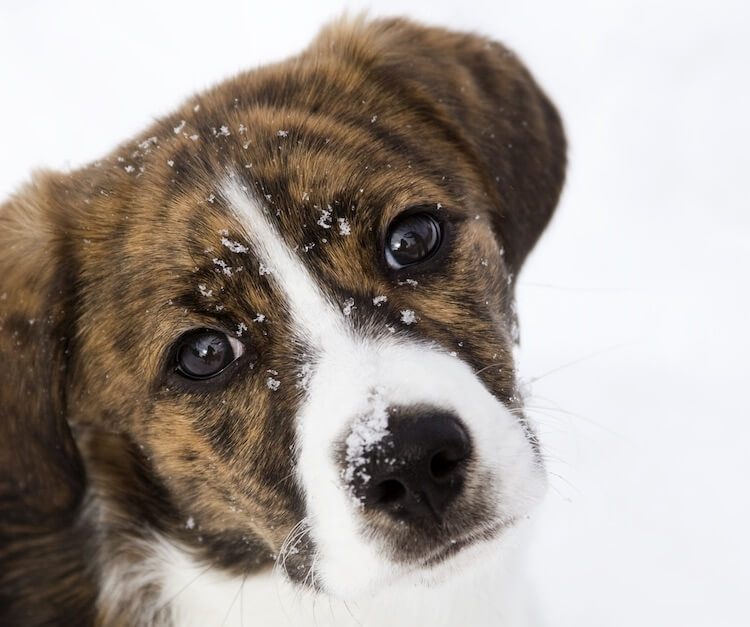
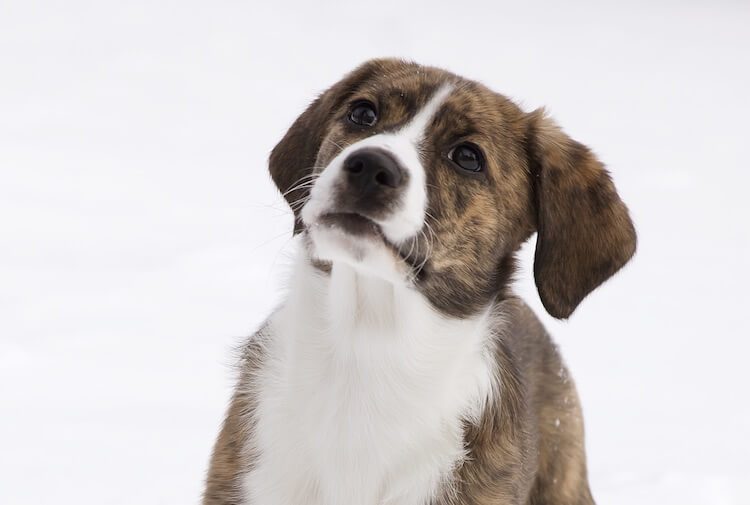


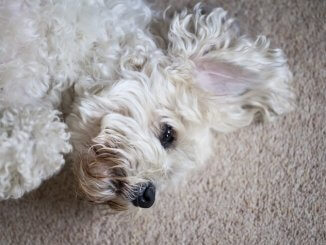
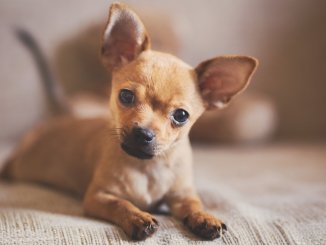
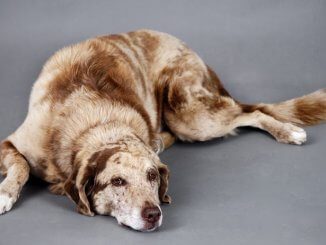
Great informative article! Would love to know which breed the picture is of. My pup looks identical to picture and we are super intrested to figure out what he is.
Hi Kait,
The picture is of a mountain feist – hope that helps.
I have 2 of the Mountain Fiest. The one I have looks like an overgrown fox terrier. His brother is solid black. Have registration papers on both. Very busy and intelligent but loves their naps. They are almos 9 months now. They are easily trained.
I saw one of these cute pups the other day and was smitten. Can anyone tell me how they think a mountain feist would get along with a 2 yr old lab and my 6 yr old grandson?
I have just got a six week old puppy. His mother was a mountain feist fawn and white in the chest and father was a lab. He is quite a extraordinary smart dog even at his young age he listens too all commands and walks with me without distraction.
This is not a good dog. This is a GREAT dog!! Our little guy is going on four years. He is a rescue and we got him when he was 6 months. Some fool had no idea what they had. Smart, easily trainable, remarkably athletic and lovable. He needs a good 30 minutes of rigorous exercise a day.
Karen. Ours was raised for the first 10 months we had him with a lab who unfortunately, we had to put down. The answer is yes. The labs will probably do a great job of training the Feist.
I just discovered I’ve a rescue Feist. I believe she’s a Tree Feist..and she actually climbs trees. When adopted she was black and brindle but boy has she grayed. A sweet yet nutty little girl. she’s been a great city and country dog.
I have a rescue dog, told she was a chihuahua/terrier. She looks like a small german shepherd, tan with black face & ear tips, perky ears. What a handful. She’s 10 months old, 30 lbs, but we’re making great progress with training, very smart! Smart, strong, willful, such a beauty. I’m sure she’s a Feist of some type. Always smelling and watching everything. Definitely has the traits of a hunter, chasing robins, bugs, anything that moves.
I have a Feist dog, per the Humane Society. A feral dog picked up on roadside in S Carolina, approx age 1.5 months. She looks like a miniature German shepherd, beige with black tips and unlying black skin. Weighs 25-30 and ~18 tall. Took many months of constant care to achieve her personality. Terrified of people, and anything thrown. Had to stand by her when feeding; was used to being secretive. She is now the best Feist ever!? Loyal, stays close. can be trusted off leach, minimal barking, focuses on rabbits, squirrels, and ducks. Requires minimal grooming. Grooms herself like a cat, and with rubbing on grass roots. Her small beigh self gets called coyote-like also. When on guard, black tips along her back rise up looking like stripe. Love her dearly. Name is Kuba, looking like the feral dogs in Cuba.
I adopted a “6” year old Feist from the Humane Society. After carefully reading the descriptions, I’m fairly certain she is a Charlie Feist. She is mostly black, but with a pretty red/brown brindle around her collar, in the winter her brindle collar really grows in. So pretty. I just love her personality, so comical. She can have a bit of separation anxiety (situational mostly, we just moved to a new place), but doesn’t really destroy anything. However one neighbor claims she barks for a while when we leave. We are breaking her in slowly with the leaving, a little bit everyday. God brought us the right dog, at the right time!
We were adopted by what at first I thought to be a brindle whippet rat terrier mix who we named LuciFur, Luci for short. He is amazingly well behaved despite being a foundling, loyal to no end, and too smart by half. After reading up on the breed, and given our geographical location in the southern US, I am almost certain he’s a brindle Denmark Feist. Thanks for the great article.